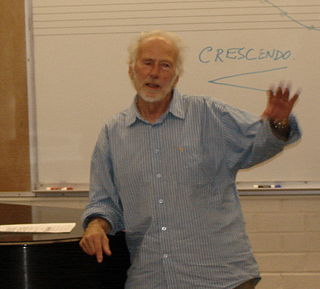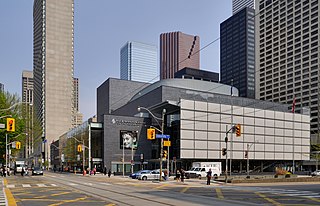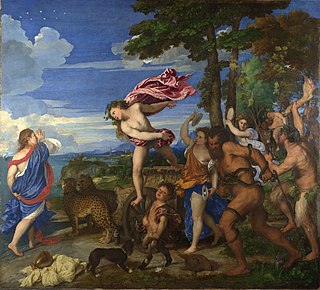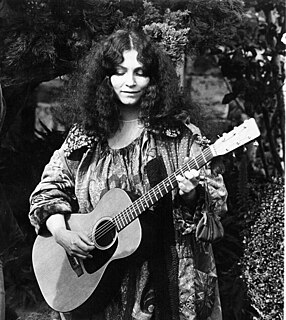Related Research Articles

Opera Australia is the principal opera company in Australia. Based in Sydney, its performance season at the Sydney Opera House accompanied by the Opera Australia Orchestra runs for approximately eight months of the year, with the remainder of its time spent in the Arts Centre Melbourne, where it is accompanied by Orchestra Victoria. In 2004, the company gave 226 performances in its subscription seasons in Sydney and Melbourne, attended by more than 294,000 people.

Thoth is an ancient Egyptian deity. In art, he was often depicted as a man with the head of an ibis or a baboon, animals sacred to him. His feminine counterpart was Seshat, and his wife was Ma'at. He was the god of wisdom, writing, hieroglyphs, science, magic, art, judgment, and the dead.

Ariadne was a Cretan princess in Greek mythology. She was mostly associated with mazes and labyrinths because of her involvement in the myths of the Minotaur and Theseus. The ancient Roman author Hyginus identified Ariadne as the Roman Libera/Proserpina at approximately the same time as Libera was officially identified with Proserpina in 205 BC, these two names becoming synonymous for the same goddess. Hyginus equated Libera/Proserpina with Ariadne as bride to Liber whose Greek equivalent was Dionysus, the husband of Ariadne.

Carole Ann Pope is a British-born Canadian rock singer-songwriter, whose provocative blend of hard-edged new wave rock with explicit homoerotic and BDSM-themed lyrics made her one of the first openly lesbian entertainers to achieve mainstream fame. She is the sister of Emmy Award-winning television producer and screenwriter Elaine Pope.

The StoryTeller is a British live-action/puppet television series that originally aired in 1987 and which was created and executively produced by Jim Henson.
A soundscape is the acoustic environment as perceived by humans, in context. The term was originally coined by Michael Southworth, and popularised by R. Murray Schafer. There is a varied history of the use of soundscape depending on discipline, ranging from urban design to wildlife ecology to computer science. An important distinction is to separate soundscape from the broader acoustic environment. The acoustic environment is the combination of all the acoustic resources, natural and artificial, within a given area as modified by the environment. The International Organization for Standardization (ISO) standardized these definitions in 2014.(ISO 12913-1:2014)

Raymond Murray Schafer is a Canadian composer, writer, music educator and environmentalist perhaps best known for his World Soundscape Project, concern for acoustic ecology, and his book The Tuning of the World (1977). He was notably the first recipient of the Jules Léger Prize in 1978.

The Four Seasons Centre for the Performing Arts is a 2,071-seat theatre in Toronto, Ontario, Canada, located at the southeast corner of University Avenue and Queen Street West, across from Osgoode Hall. The land on which it is located was a gift from the Government of Ontario. It is the home of the Canadian Opera Company (COC) and the National Ballet of Canada. The building's modernist design by was created by Canadian firm Diamond and Schmitt Architects, headed by Jack Diamond. It was completed in 2006, and the interior design includes an unusual glass staircase.

Antonio Alberto García Guerrero was a Chilean composer, pianist, and teacher. While he is most famously remembered as the mentor of Canadian pianist Glenn Gould, García influenced several generations of musicians through his many years of teaching at the Toronto Conservatory of Music.

Ariadne auf Naxos, Op. 60, is an opera by Richard Strauss with a German libretto by Hugo von Hofmannsthal.The opera's unusual combination of elements of low commedia dell'arte with those of high opera seria points up one of the work's principal themes: the competition between high and low art for the public's attention.
Cycle has several meanings in the field of music. Acoustically, it refers to one complete vibration, the base unit of Hertz being one cycle per second. Theoretically, an interval cycle is a collection of pitch classes created by a sequence of identical intervals. Individual pieces that aggregate into larger works are considered cycles, for example, the movements of a suite, symphony, sonata, or string quartet. This definition can apply to everything from settings of the Mass or a song cycle to an opera cycle. Cycle also applies to the complete performance of an individual composer's work in one genre.
Meditation music is music performed to aid in the practice of meditation. It can have a specific religious content, but also more recently has been associated with modern composers who use meditation techniques in their process of composition, or who compose such music with no particular religious group as a focus. The concept also includes music performed as an act of meditation.
The Juno Award for Classical Album of the Year has been awarded since 1977, as recognition each year for the best classical music album in Canada.
The Juno Awards of 1980, representing Canadian music industry achievements of the previous year, were awarded on 2 April 1980 in Toronto at a ceremony hosted by Burton Cummings at the Harbour Castle Hilton.
The Princess of the Stars is an experimental opera or music drama by the Canadian composer R. Murray Schafer. The opera is notable because it must be performed around and on a lake, preferably as far from civilization as possible. The opera was premiered on a small lake outside Toronto in 1981 by New Music Concerts and again in 1985 for the Banff School of Fine Arts summer festival on a more remote lake in Banff National Park. The performance was attended by over five thousand people. Other performances occurred at Haliburton Forest and Wildlife Reserve, Ontario in September 1997 and August/September 2007.

L'Arianna is the lost second opera by Italian composer Claudio Monteverdi. One of the earliest operas in general, it was composed in 1607–1608 and first performed on 28 May 1608, as part of the musical festivities for a royal wedding at the court of Duke Vincenzo Gonzaga in Mantua. All the music is lost apart from the extended recitative known as "Lamento d'Arianna". The libretto, which survives complete, was written in eight scenes by Ottavio Rinuccini, who used Ovid's Heroides and other classical sources to relate the story of Ariadne's abandonment by Theseus on the island of Naxos and her subsequent elevation as bride to the god Bacchus.

Egyptian mythology is the collection of myths from ancient Egypt, which describe the actions of the Egyptian gods as a means of understanding the world around them. The beliefs that these myths express are an important part of ancient Egyptian religion. Myths appear frequently in Egyptian writings and art, particularly in short stories and in religious material such as hymns, ritual texts, funerary texts, and temple decoration. These sources rarely contain a complete account of a myth and often describe only brief fragments.

Shekhinah Mountainwater was a musician, author, teacher, priestess of Aphrodite, and a key figure in the Goddess movement. She is well known on the west coast of the United States, but has a significant following throughout America and abroad for her music, writing, teaching, Womanrunes, Moonwheels, Goddess ritual, and spiritual and social activism.
The Orford String Quartet was a Canadian string quartet active from 1965 through 1991. They came to be the leading string quartet in Canada, and were well-known internationally.
Phyllis Margaret Mailing was a Canadian mezzo-soprano, teacher, and patron of classical music. She had a distinguished career as a singer, performing across North America and Europe.
References
- ↑ MacKenzie, Kirk Loren. A twentieth-century musical/theatrical cycle: R. Murray Schafer's Patria (1966-). University of Cincinnati, 1992. p. 1
- ↑ Galloway, Kathleen (2010). "Sounding Nature, Sounding Place": Alternative Performance Spaces, Participatory Experience, and Ritual Performance in R. Murray Schafer’s Patria Cycle. University of Toronto.
- ↑ Galloway, Kathleen (2010). "Sounding Nature, Sounding Place": Alternative Performance Spaces, Participatory Experience, and Ritual Performance in R. Murray Schafer’s Patria Cycle. University of Toronto.
- ↑ MacKenzie. 1.
- ↑ Littler, William (23 Nov 1987). "Schafer on to something in trying to reform opera". Toronto Star. Toronto. pp. D6.
- ↑ Green, Robert Everett (23 Nov 1987). "Undisciplined script detracts from Patria's superb music". Globe and Mail. Toronto. pp. C9.
- ↑ Schabas, Ezra; Morey, Carl (2000). "Opera Viva, Canadian Opera Company, The First Fifty Years". Dundurn Press. pp. 175–177.
- ↑ Schafer, R. Murray. Patria and the Theatre of Confluence, Arcana Editions. 1991.
- ↑ Schafer, R. Murray. Patria, Liner notes. Opening Day Recordings, 1996. CD.